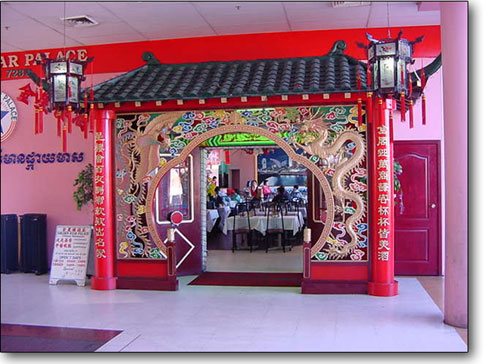| ||
Who’s afraid of monosodium glutamate?
by Chef Boy Ari Until recently, the consensus among chefs, scientists and food theorists has been that the human tongue can distinguish four basic tastes: sweet, salty, sour and bitter. Flavor results from the combination of these primary tastes in conjunction with other cues, like aroma. Try holding your nose the next time you’re eating and see how the flavor changes. In recent years, a growing subset of those who ponder such things have found themselves agreeing with what Asian foodies have believed for centuries: there is a fifth taste. The Japanese word “umami” translates loosely as “savory,” “robust,” “good taste,” or my personal favorite: “fullness of mouth.” Some describe umami as the satisfaction involved in the total experience of eating. The word’s etymological root is umai, a Japanese word that means “goodness” and “oneness with the universe.” Seafood, cheese, mushrooms, tomatoes and meat have high levels of umami. Condiments like oyster sauce, fish sauce and soy sauce all push the umami button as well, and they are carefully employed by Asian chefs. A cadre of skeptics continues to refute the categorization of umami as a taste, insisting that it’s merely a flavor enhancer without a true flavor of its own. But umami’s status as the fifth taste was supported in 2000 when researchers at the University of Miami discovered taste buds specific to umami detection. Receptors for sweet and bitter tastes, meanwhile, remain at large. The debate over what umami is and does is often tangled with a parallel debate over the culinary properties and health consequences of monosodium glutamate, aka MSG, a food additive that’s essentially purified umami. For over 1,000 years Japanese cooks have added umami to their food with a stock made from konbu seaweed and dried fish flakes (the drying of fish and mushrooms increases their umami-ness). In 1908, Kikunae Ikeda of the Tokyo Imperial University succeeded in isolating the umami component of this stock, which he identified as glutamate. Glutamate is the most common of the 20 amino acids necessary for protein production and is found in many, many foods – especially foods rich in umami taste. Glutamate is the umami taste; it’s the specific chemical that the umami buds recognize. Monosodium glutamate is manufactured by fermenting sugar beets, sugar cane or any of a handful of starchy cereals and tubers. The glutamate is isolated, purified and neutralized with sodium. Over a million metric tons of the resulting white crystalline powder is sold every year. The FDA and its international peers have concluded that MSG is safe. Nonetheless, a strong anti-MSG movement has gained international attention since the 1970s, when monosodium glutamate became the prime suspect behind a condition called “Chinese Restaurant Syndrome.” Victims of Chinese Restaurant Syndrome claim to experience a variety of ailments after eating Chinese food, including migraines, fever, numbness, tingling and chest pain. Defenders of MSG point out that there are other possible causes of Chinese Restaurant Syndrome, including the imagination. While the Japanese invented purified MSG, you rarely see reference to “Japanese Restaurant Syndrome.” Plenty of research was conducted during the 1980s and 1990s, garnering little evidence to support a link between MSG and Chinese Restaurant Sydrome. Some critics of these tests point out that much of the exonerating evidence comes from trials in which the placebo used was Aspartame, a sugar substitute with similar purported effects and embroiled in a similar controversy. Nonetheless, the majority of research indicates that aside from the less than 1 percent of the population that exhibits an allergic reaction to MSG, the additive has no adverse health consequences. More people than that are allergic to peanuts, but there is no anti-peanut movement. But perhaps the best argument as to MSG’s essential harmlessness is the discovery of high levels of glutamate in human breast milk – as much as four times the level of taurine, the next most abundant amino acid. Baby taste buds are able to detect only two tastes: sweet and umami – which happen to be the only two taste components of breast milk. The pairing of sweet and umami flavors is a well-known combination, based on the principle that sweetness enhances umami. The following recipe for clear soup is a variation on the recipe for the broth from which the first crystals of purified umami – MSG – were isolated. This soup uses a bit of sweetness to bring out the umami flavor of the kelp and fish. Combine 2 quarts water, a 3-by-3-inch sheet of dried konbu seaweed and 5 teaspoons bonito flakes. Bring the mixture to a boil, stir in 2 teaspoons sugar, and remove from heat. Strain the soup through a fine mesh sieve. Sip as is, or use as a base on which to build any of the myriad recipes that begin with a bonito/konbo broth, such as miso soup. Clear soup may not be quite the same as a mouthful of mother’s milk, but we have to grow up sometime, don’t we? •
|


